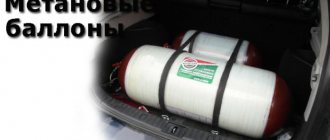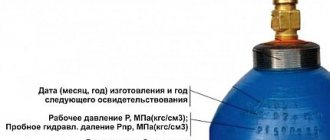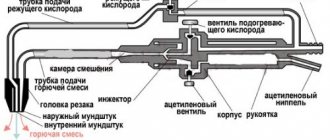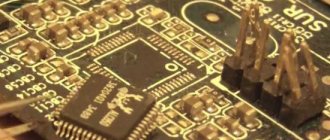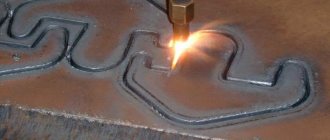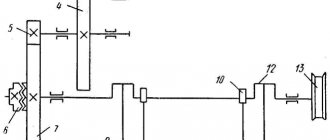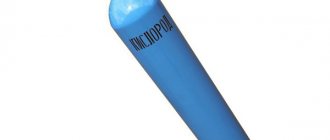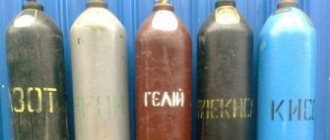| Place | Name | Characteristics in the rating |
| The best gas cutters for metal |
| 1 | Krass Р3П-300 | The best choice |
| 2 | REDIUS Р2А-01М | Lightweight design |
| 3 | DONMET RK Vognik 182 | Universal plasma torch |
| 4 | KEDR R3P-05 1390036 | Long design |
| 5 | Svarog RZ 62-3F 1C005-0012 | Best Lever Blow Cutter |
| Best Handheld Metal Cutters |
| 1 | Pathfinder-GTP-S05 | Best manual cutter |
| 2 | Campingaz Chalugaz profile | Most comfortable handheld design |
| 3 | Kovea KT-2008 | Convenient cutter for small jobs |
| 4 | Pathfinder GTP-R03 | Compact tool |
| 5 | Kovea KT-2911 Long Canon | Hand torch with extended nozzle |
There are many ways to cut metal, but the most effective, simple, and, oddly enough, safe is the gas method. The essence of the technology is based on the chemical interaction of flammable gas, in most cases propane, with oxygen. As a result of this synthesis, a directed flame is formed with a high temperature in the center, which reaches the melting point of steel.
A more modern method is plasma cutting. The technology is similar, only an electric arc acts as the jet activator. A plasma cutter is capable of creating a thinner cut, but if in the case of propane it is enough to acquire only two gas cylinders (with propane and oxygen), then you will need a special device - a plasma torch.
When choosing a cutter, you should first of all pay attention to its ergonomics and convenience. Typically, the cutting process takes many hours, and some places are very difficult to reach. The design of the cutter is selected individually, depending on the tasks assigned. We also look at the safety of the tool, but if we talk about our rating, which includes the 10 best cutters, then this parameter is present in all models, regardless of their price category.
The best gas cutters for metal
A gas cutter consists of several modules: a holder, a valve system, tubes and a nozzle. Each model has its own characteristics. For example, the nozzle should be equipped with kickback protection, and the handle should fit comfortably in the hand and not slip out. When choosing, special attention is paid to the valve system, which bears the main load during operation. The location of the valves also matters in terms of convenience, and in some models the purge valve is replaced with a lever. Such tools are also presented in our rating.
Classification according to the combustible gas used
Propane
Propane gas cutters are ideal for processing cast iron pipes and other products made from ferrous and non-ferrous metals. Propane gas cutters are rightfully considered the most reliable and safe and at the same time are able to provide maximum work productivity.
Acetylene
Acetylene gas cutters are used for cutting sheet metal and large parts. Such devices must be equipped with a special valve that regulates the speed and power of oxygen supply to the work area.
Universal
Universal injection-type gas cutters are the most in demand today. These devices allow you to use the power of the working gas if the pressure inside the housing is from 0.03 to 1.5 kgf/square centimeter. The universal cutter is simple and easy to use, has relatively small dimensions and is capable of cutting metal products in different directions. With its help, you can effectively process metal with a thickness of 3 to 300 mm in thickness.
Safety precautions
It is better to entrust metal cutting using a gas installation to an experienced specialist, since if handled carelessly, the consequences can be quite tragic.
Safety precautions presuppose the following conditions:
Gas burner device
- good ventilation in the room where the work will be carried out;
- there should be no gas cylinders or other flammable substances within a distance of 5 meters;
- work must be carried out wearing a protective mask or special glasses, as well as fire-resistant clothing;
- the flame must be directed in the opposite direction from the gas source;
- During operation of the device, hoses must not be bent, stepped on, or pinched with feet;
- If you take a break, you should completely extinguish the flame at the burner and tighten the gas valves of the cylinders.
Compliance with these simple conditions will ensure safe and efficient work when cutting metal with a gas installation.
Pros and cons of gas cutters
The advantages of gas cutters include:
- The ability to effectively process metal with a thickness of up to 300 mm (depending on the modification and operating parameters of the equipment).
- Combustion stability of the exiting flame. The mixture is burned without popping or backfire.
- Ability to work with metal in any direction.
- Efficiency.
- High performance.
- Convenience and ease of equipment maintenance.
- Low cost of devices and components.
The disadvantages include:
- The likelihood of thermal deformation of the material.
- The need to refine the edges formed as a result of the cut.
- High risk of fire.
- Large cutting width, which makes it necessary to maintain allowances when carrying out marking work.
- Cannot be used with stainless steel.
- When working with thick metals, the taper of the cut becomes noticeable.
Where can I buy
The product can be purchased in our online store or at one of the warehouses in Moscow. You can receive your order yourself or by ordering delivery.
Delivery
When ordering goods with a total weight of up to 6 kg, the cost of delivery by courier is 400 rubles
, you can order such delivery by selecting the cutter or other product you need in the Catalog section.
Delivery costs exceeding 6 kg depend on your location. Regular delivery in Moscow costs from 1,200 rubles
.
Delivery can be ordered by phone: +7
.
Delivery orders are open on weekdays from 9-00 to 17-00, on Saturdays from 10-00 to 14-00, and on the website - around the clock
. All warehouses are open on weekdays from 9-00 to 17-00, and on Saturdays from 10-00 to 14-00.
How to use a gas cutter correctly: preparatory stage
First, we will ensure security and prepare everything necessary. You will need:
- Carbon dioxide fire extinguisher. Metal cutting with a cutter is carried out at temperatures above 1800 degrees, so we need protection. Carbon dioxide will be most effective compared to powder. By the way, a bucket of sand won’t hurt either.
- Fireproof suit. In principle, the usual equipment of a gas welder will do. It is made of tarpaulin impregnated with a fire-resistant compound. You will also need protective gloves and boots.
- Glasses. It’s easy to get a “bunnies” effect from the brightness of hot gases, so you need regular filter glasses, preferably level 3.
- Marking tool.
- Ear protection. Construction headphones or earplugs.
- Lighter for cutter. Ordinary matches or lighters are not suitable - your hands are too close to the torch. You can buy what is sold in the store under the name “household lighter.”
We prepare the workplace separately. Ideally, buy or make a welding table with an exhaust hood. But a base of fireclay bricks is a good place to start. There should be no flammable objects for 2-3 meters around the work site: paper, solvents, fuel, oils.
Necessary equipment
Now let's assemble the necessary equipment. All we need is:
- Cylinders. To assemble a propane oxygen cutter , we simply buy the appropriate cylinders. This can be done at any shop with welding equipment. They are refillable and can be refilled at the same retail outlet or gas station.
- Sleeves. For propane you will need a class 1 hose with a diameter of 1 to 2 centimeters. It is desirable that it be red for convenience. Oxygen has the same diameter, but strength class 3.
- Gearboxes. They are purchased for each gas separately. We need propane (for example, BPO-5DM) and oxygen (BKO-50DM). By the way, it is impossible to confuse them, since propane has a reverse thread.
- Check valves. At the entrance to the burner, fire arresters are installed, which also have a gas gradation. It is not worth starting the cutter without them, since if there is a bang, the combustion will spread to the sleeve and may reach the cylinder.
- Oxygen-propane burner. You can buy it at any online tool store. For example, GZU 228, G2 Mini 273, R1 142.
That's all that is needed to start the propane-oxygen cutter .
When everything is prepared, you can proceed to working with metal.
How to use an oxypropane torch
Preparing for work
And so, let’s assemble our cutter and check for functionality. By the way, a preventive inspection should be carried out before each start-up to avoid leaks. Especially if the equipment has been idle for a long time or there is a suspicion of a leak.
Begin:
- First, let's connect the sleeves to the cylinders. The oxygen hose is connected to a nipple with a fitting to the gearbox with a right-hand thread. The propane hose is installed in the same way. We pass all connections with a sealant (anaerobic sealant, tow, fuser).
- We release the gas a little to remove dirt from the hoses.
- Nipples are attached to the reverse side of the sleeve for transferring to fire-retardant valves.
- The burner itself is already attached to them. There should be color markings on it so as not to confuse oxygen with gas.
By the way, it would be a good idea to check the air leaks. To do this, the oxygen hose must be connected to the cylinder, and the propane nipple must be left free. We set the oxygen supply to 5 atmospheres. Touch the free nipple with your hand. If it “sucks in”, everything is fine, you can work. If not, you will need to bleed the injector.
Don't forget to seal all connections.
Let's get started
Now we will look at how to properly cut metal with a cutter . It's not difficult, but you'll have to get used to the angle of the cut. To begin with, we set the oxygen reducer to 5 atmospheres. On propane we set it to 0.5. The proportion of 1 to 10 was chosen because we have gas combustion in an oxygen environment.
Let's start by igniting the propane. Open the valve on the burner slightly and light it. We rest the nozzle against the metal at an angle of 90 degrees. Now we open the regulating oxygen a little. Now we open the valves one by one until we get a torch of the required size. Its length depends on how thick a piece of metal we need to cut through.
We start heating from the point from which cutting is planned. We are waiting for the metal to melt. On average, it takes about 10 seconds to warm up. When the metal is hot enough, let in cutting oxygen. It looks like a thin needle. Then we just slowly move it along the cutting line.
The cutting oxygen valve must be opened slowly.
The pressure difference can cause the flare to backfire, called a “pop.” If there is no fireproof check valve, flames will flow to the cylinders and cause an explosion.
How to use a cutter correctly? The correct angle must be maintained. We start with 90 degrees, then slightly tilt the cutter 5-6 degrees in the opposite direction from the cut. If the metal is more than 9 centimeters, you can tilt it up to 10.
When the metal has already been cut by 20 millimeters, set the angle of inclination to 20 degrees.
Cutting nuances
The cutting speed largely influences the work. You can tell if it is chosen correctly by the sparks. If it is chosen correctly, their angle of incidence will be in the range of 88-90 degrees.
If the sparks noticeably deviate in the direction opposite to the cutting line, you need to increase the speed; on the contrary, slow down.
Before cutting with a cutter , measure the thickness of the metal. If it is more than 6 centimeters, there will be problems with the outflow of waste. To prevent this, just tilt the sheet to one side.
According to technology, it is not recommended to stop the cutting line.
If work needs to be interrupted, there is no need to start from the same place. You need to start a new line from the back of the marking.
When the work has been completed, first the cutting oxygen is turned off, then the regulating oxygen and only then the propane.
You can learn more about how you need to hold your hands while cutting so that the lines are obtained from the video:
Precautionary measures
Before using a gas cutter, remember safety precautions. First of all, be sure to have the full equipment described above. It cannot be neglected, since metal heated to 2000 degrees can cause severe skin burns.
Before each cut, inspect the hoses for integrity. Joints, cracks, and breakthroughs will lead to gas leakage, which can easily lead to an explosion. It is also not recommended to seal them - it is better to change them.
By the way, rubber hoses do not like frost and often crack after working outside in winter. Because of this, many people change them to metal ones, which is prohibited due to safety regulations.
Remember the properties of gas.
Propane is an explosive gas that can ignite from any spark. Oxygen is more dangerous because it is a powerful oxidizing agent. When it comes into contact with oil (especially natural oil: teak, tung, linseed), it oxidizes it, leading to fire. The cylinder should not be touched with oily hands or gloves. There should be no oil rags or stains nearby, especially near the place of work.
The cylinder must be located at least 10 meters from the workplace. Between each other - 5 meters.
You can learn more about safety precautions when working with a cutter from the video:
Conditions for cutting metal with gas
Gas cutting of metal will be effective only when the ignition temperature of the metal is lower than the melting point. Such proportions are observed in low-carbon alloys; they melt at 1500 °C, and the ignition process occurs at 1300 °C.
For high-quality operation of the installation, it is necessary to ensure a constant supply of gas, since oxygen requires a constant amount of heat, which is maintained mainly (70%) by the combustion of metal and only 30% is provided by the gas flame. If it is stopped, the metal will stop producing heat and oxygen will not be able to perform its functions.
Cutter operation, metal cutting training
The maximum temperature of hand-held gas cutters reaches 1300 °C, this is a sufficient value for processing most types of metal, however, there are those that begin to melt at particularly high temperatures, for example, aluminum oxide - 2050 °C (this is almost three times more than the melting point of pure aluminum), steel containing chromium – 2000 °C, nickel – 1985 °C.
If the metal is not sufficiently heated and the melting process has not begun, oxygen will not be able to displace refractory oxides. The opposite of this situation is when the metal has a low melting point and, under the influence of burning gas, it can simply melt, so this cutting method cannot be used for cast iron.
